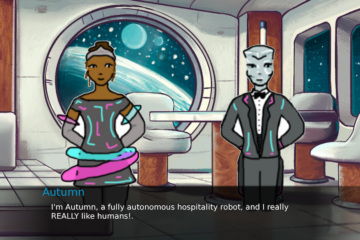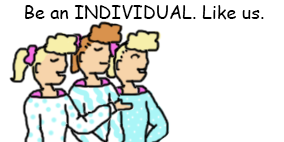When I first started writing fiction, it felt like everything I wrote was either under 1,000 words or over 10,000… and the short fiction markets prefer the lengths between those two extremes.
In fact, different fiction markets have different “sweet spots” for what they want. Some magazines prefer 2,000 word stories. There’s this one place that only takes between 850-900 words because they put the story in a print column. (Maddening!)
Last year, I set myself a goal to get into that market. I focused hard on writing tiny stories. I ended up with a lot of flash fiction stories and a sense that I felt I groked how to write this length. So I set my goal this year to try to write Novelette length – 8k-20k. A length I used to write all the time trying to hit 5K but that I’ve trained myself out of.
I mentioned this casually and immediately a writer friend asked, “How do you do that? How do you control the length of your story?”
And so, as I do whenever I catch myself saying, “I dunno… I just do it.” I stopped and interrogated my experience and struggle to come up with what I learned through it and make a blog post about it.
The blog post you are reading. AHEM. To the point.
How do you know what length a story will be?
Length control begins at the planing stage, before a word is written. (Or okay you’ve written this neat opening paragraph that popped into your head and hey, maybe this is a story?)
Experience has taught me that a flash fiction story is usually one scene. A short story is usually one to five scenes. A novelette would need to have more than five scenes, probably. A novel needs, like, 30.
Think about how many scenes you are going to need to tell the story you are thinking of telling. A beginning, a middle, an end? Three scenes? Could be pretty short. But do you need a complication, a return to the beginning? Do you have to introduce three characters in their own scenes? That adds length.
Generally, when I sit down to draft, I know the shape of the story I want, and that tells me how many scenes I want, which gives me a vague idea of length.
My outlines are really just lists of plot beats. Sometimes after writing them all down, I look over the list and think “This isn’t enough for a novel.” or “This is too much for a short story” and I edit the outline up or down.
So that’s one thing.
What to do if your story is too long
There are two types of too long. The first type is when the story is within the ‘reasonable’ length window but feels too long / drags, or you just need to trim like 10% off.
For this type of too long, I have an easy set of tweaks:
- Remove all instances of “just”, “seems”, “almost”, “only”, “sort of”, “a lot”, “a little” and any other “weasel words” that are only there to weaken impact and put a foot out the door for deniability.
- Interrogate every adjective. Make it justify its existence. If it can’t, cut it.
- Do a pass where you mark any and all cliches and kill them. Sometimes no description is better than a cliche.
- Check for descriptions that are only there to tag dialog. Does she have to stand up there? Maybe just use “She said.”
- No one needs to frown and smile that much. I only allow myself one smile per story. These emotional tags are often too flat, anyway. Let the tension of the scene and dialog show the emotions rather than smiles and frowns and crying and laughing.
The second type of too long is when the dang thing is just waaay too long. In that Novelette or Novella land. You can do all those cutting tweaks above and the thing is still too long. You gotta cut like over a thousand words.
Now you have to remove bigger things than words or phrases. This is where you kill darlings.
- Remove a character. Who isn’t pulling their weight? Bye, Felicia. Sassy best friend dialog can become much shorter inner monologue.
- Remove a setting. Did they have to go from the house to the car? Put the car action in the scene in the house.
- Remove a plot step. Do you have to retrieve the sword before the adventure begins? How about instead you just have it already? Done.
- Simplify the theme. This is a tricky one, but are you showing 8 sides of an issue when 6 would do?
I turned an unsellable 60,000 word mini-novel into a totally sellable 37,000 word novella when I realized there was a whole complete sequence of actions that could just. go. I turned two escapes into one. I moved what was really important (character development) to other scenes that already existed for other plot reasons.
It felt good, too. I’ll let you know if I ever sell it, though. There aren’t that many novella markets. (More than there are 60,000 word novel markets, though!)
Now, on to the other side:
What to do if your story is too short
This is harder, because it involves ADDING rather than subtracting. Cutting things is a simple exercise. All the decision-making and nuance is in re-wiring over the holes. Adding means you have to plan and make decisions. Build scenes and characters. Ugh. Work. (Hence how I’m working on it now.)
- Add a character. Do you have a theme that could use a voice? Does one of the decisions not have someone to oppose it? These are great places to throw someone in from your character bench. Give your main character a mom, a kid, a neighbor, a sibling, a co-worker. Just make sure they serve a purpose to advance plot or theme or complicate your character’s life. (Someone to take care of is always good!) In fact, adding or removing characters is the surest way to affect length.
- Explore a new setting. Take a scene and cut it into two, putting one half in a COOL PLACE that maybe shows off an aspect of your worldbuilding or your character’s life.
- Complicate the theme. Have you really considered all the angles of the moral question your characters are dealing with? Throw in another scene or action that shows a different take.
- Add another plot step. How about instead of breaking into the jail, they have to sneak into town THEN break into the jail? Maybe one of the tools they need for the quest has to be gotten on its own mini quest.
If this sounds like the shortening advice in reverse… it is!
Over time, and lots of drafts, you start to feel the length of the story you are writing. I got good at hitting 2,000-3,000 words. Now I’m expanding. A 1,000 word story is simpler. It has to do less. It’s okay if its plot has no twists (or only one.) A 10,000 word story has to do more. It needs a sub-plot and branches that explore theme. The shape is a little more complicated, but that’s okay.
It’s still made of the same stuff.


